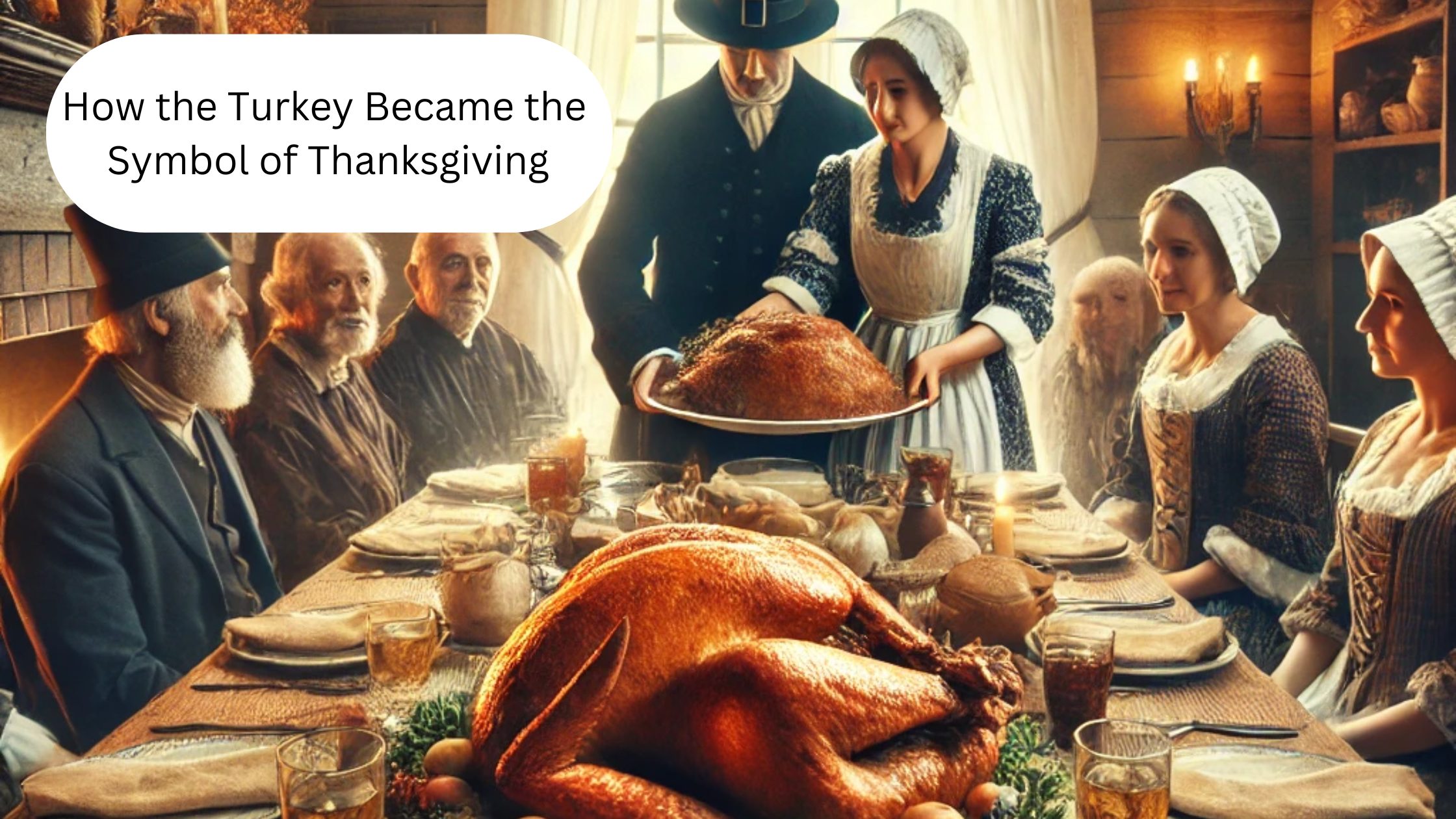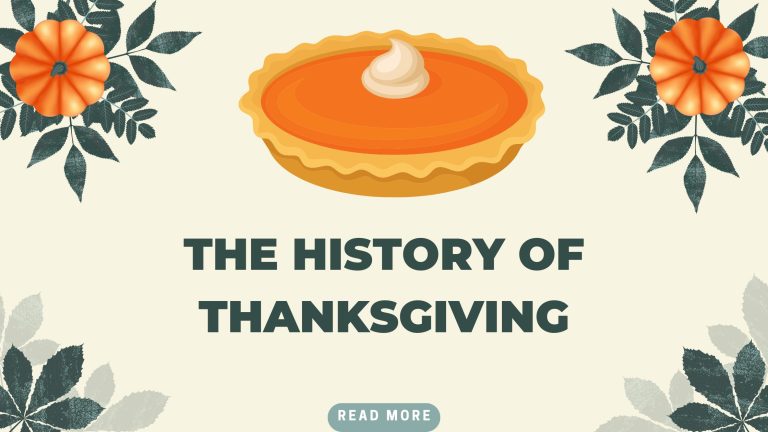
How the Turkey Became the Symbol of Thanksgiving:
The association of the turkey with Thanksgiving in the United States is deeply rooted in the holiday’s historical, cultural, and culinary evolution. From early colonial feasts to today’s grand celebrations, the Thanksgiving turkey has become an icon representing family gatherings, gratitude, and abundance. This article delves into how the turkey became such an emblematic part of Thanksgiving, exploring historical records, culinary traditions, and social influences that solidified this bird’s position at the heart of the holiday table.
1. The Origins of Thanksgiving in America
Thanksgiving, as an American tradition, traces its roots to early European settlers, particularly the Pilgrims who arrived in Plymouth, Massachusetts, in 1620. This group of English Separatists endured a grueling first winter, with more than half of them succumbing to disease and starvation. In 1621, after a successful harvest, the Pilgrims held a feast in thanks for the crops and their survival. Indigenous Wampanoag people, who had helped the settlers adapt to the land, attended this feast as well.
While this event is often cited as the “First Thanksgiving,” it wasn’t necessarily the inaugural use of the term or celebration in the New World. Similar harvest festivals had occurred earlier in various European colonies. However, this feast between the Pilgrims and the Wampanoag was popularized and romanticized as the origin of Thanksgiving in American lore.
2. What Did the Pilgrims Eat?
The details of the 1621 feast come primarily from Edward Winslow, a Pilgrim leader, who noted the foods available. Winslow wrote that the Wampanoag brought five deer, which indicates venison was served. Other foods likely included corn, beans, and squash, known as the “Three Sisters” crops among Indigenous people, as well as seafood like fish and shellfish, local berries, nuts, and pumpkins.
However, Winslow’s accounts do not mention turkey as a main dish. While wild turkeys were native to North America and known to the Pilgrims, there is no record of them serving turkey at this first feast. Instead, turkey’s association with Thanksgiving grew over time, influenced by a mix of cultural, practical, and symbolic factors.
3. Turkey’s Popularity in Colonial America
Turkeys were indigenous to North America and were a common food source for both Indigenous peoples and early settlers. Wild turkeys, once abundant, were hunted for their meat and prized for their size, which could easily feed a large gathering. Their availability and their prominence in North America made them a practical option for colonial feasts, particularly around harvest time.
In the 18th and early 19th centuries, turkeys became increasingly popular in America as a staple for special occasions. This wasn’t limited to Thanksgiving; turkeys were a luxury food item and would be prepared for various celebratory gatherings, including Christmas and New Year’s feasts.
4. The Thanksgiving Holiday and Turkey in Literature
The Thanksgiving holiday itself did not become an official, nationwide observance until much later. In the 19th century, author Sarah Josepha Hale, sometimes called the “Mother of Thanksgiving,” campaigned for the holiday to be recognized across the United States. In 1863, President Abraham Lincoln, influenced by Hale’s efforts, declared Thanksgiving a national holiday, setting it as an annual day of thanks and celebration.
Hale’s advocacy played a pivotal role in shaping Thanksgiving traditions, including the association of turkey with the holiday. In her 1827 novel Northwood, Hale depicted a traditional New England Thanksgiving meal featuring roasted turkey. This novel, widely read at the time, set a standard that reinforced the presence of turkey as a symbol of Thanksgiving. Through Hale’s portrayal, turkey became intertwined with the holiday in the American imagination.
5. Turkey as an Accessible, Abundant Choice
Turkeys became a natural choice for a holiday centerpiece because they were generally large enough to feed a family and more affordable than other meat sources, especially when farming practices improved. Farmers found turkeys easier to raise than other livestock, making them an economical choice for a large holiday feast.
Their size, abundance, and cost-effectiveness positioned turkeys as the ideal Thanksgiving meat. A single turkey could serve an entire family, making it an economical choice that fit the theme of abundance and gratitude celebrated during Thanksgiving.
6. Symbolism and the Image of the Turkey
Over time, the turkey became more than just a practical food choice—it took on symbolic meaning as well. Thanksgiving was increasingly seen as a uniquely American holiday, a celebration of the nation’s values of family, community, and abundance. The turkey, a native North American bird, became a fitting symbol of these values, reinforcing the idea of Thanksgiving as an American tradition.
This symbolism was further popularized by Norman Rockwell’s 1943 painting, Freedom from Want, which depicts a family gathering around a table with a golden-brown turkey. Rockwell’s image, published in The Saturday Evening Post, captured the quintessential Thanksgiving scene, with the turkey as the centerpiece of a joyful family celebration. This image cemented the turkey’s iconic role in Thanksgiving festivities.
7. Modern Thanksgiving Traditions and the Turkey’s Place
In modern times, turkey remains the centerpiece of the Thanksgiving meal, a tradition now celebrated by millions of families across the United States. According to the National Turkey Federation, nearly 46 million turkeys are eaten each Thanksgiving, demonstrating the bird’s cultural and culinary significance. Turkey has become so integral to Thanksgiving that alternative options, while present, are generally seen as nontraditional.
The Thanksgiving turkey has also inspired a variety of cooking techniques, including roasting, deep-frying, smoking, and brining. Families develop their own traditions around turkey preparation, contributing to the unique identity of the holiday.
8. The National Turkey Presentation and Pardoning Tradition
The tradition of “pardoning” a turkey, an official ceremony presided over by the President of the United States, has also reinforced the bird’s iconic status. The tradition is believed to have origins as far back as the 19th century when Abraham Lincoln’s son reportedly pleaded for the life of a turkey meant for Christmas dinner.
However, the modern tradition of the National Thanksgiving Turkey Presentation was formalized in 1947 when President Harry S. Truman received a turkey from the Poultry and Egg National Board. Since then, this tradition has evolved into a symbolic “pardoning,” where one or two turkeys are spared and allowed to live out their days on a farm. This annual event has become a lighthearted but cherished part of Thanksgiving, further highlighting the symbolic nature of the turkey.
9. Cultural Depictions and Turkey as a Pop Culture Icon
Thanksgiving and the turkey have been widely depicted in American culture, from children’s books to television shows and movies. Characters like Snoopy from Peanuts and various animated turkeys in movies such as Free Birds and Turkey Hollow have contributed to the turkey’s iconic role in Thanksgiving lore.
This cultural presence not only reinforces turkey as the central symbol of Thanksgiving but also allows for playful reinterpretations of the tradition, connecting generations with a shared symbol of holiday cheer and unity.
10. The Legacy of the Turkey in Thanksgiving Celebrations
Today, turkey symbolizes more than a meal. It represents the Thanksgiving spirit—a coming together of family and friends, gratitude for life’s blessings, and a tradition that has evolved over centuries. Despite variations in Thanksgiving customs across households and regions, the turkey remains a constant, embodying the essence of an American holiday that celebrates community and plenty.
Whether roasted, fried, or carved ceremoniously, the Thanksgiving turkey has become a lasting icon of American culture and tradition. Its journey from a practical meal choice to an emblem of Thanksgiving speaks to the power of shared traditions in creating a sense of belonging, history, and continuity. In this way, the turkey has transcended its culinary role to become a powerful symbol of the holiday itself.


